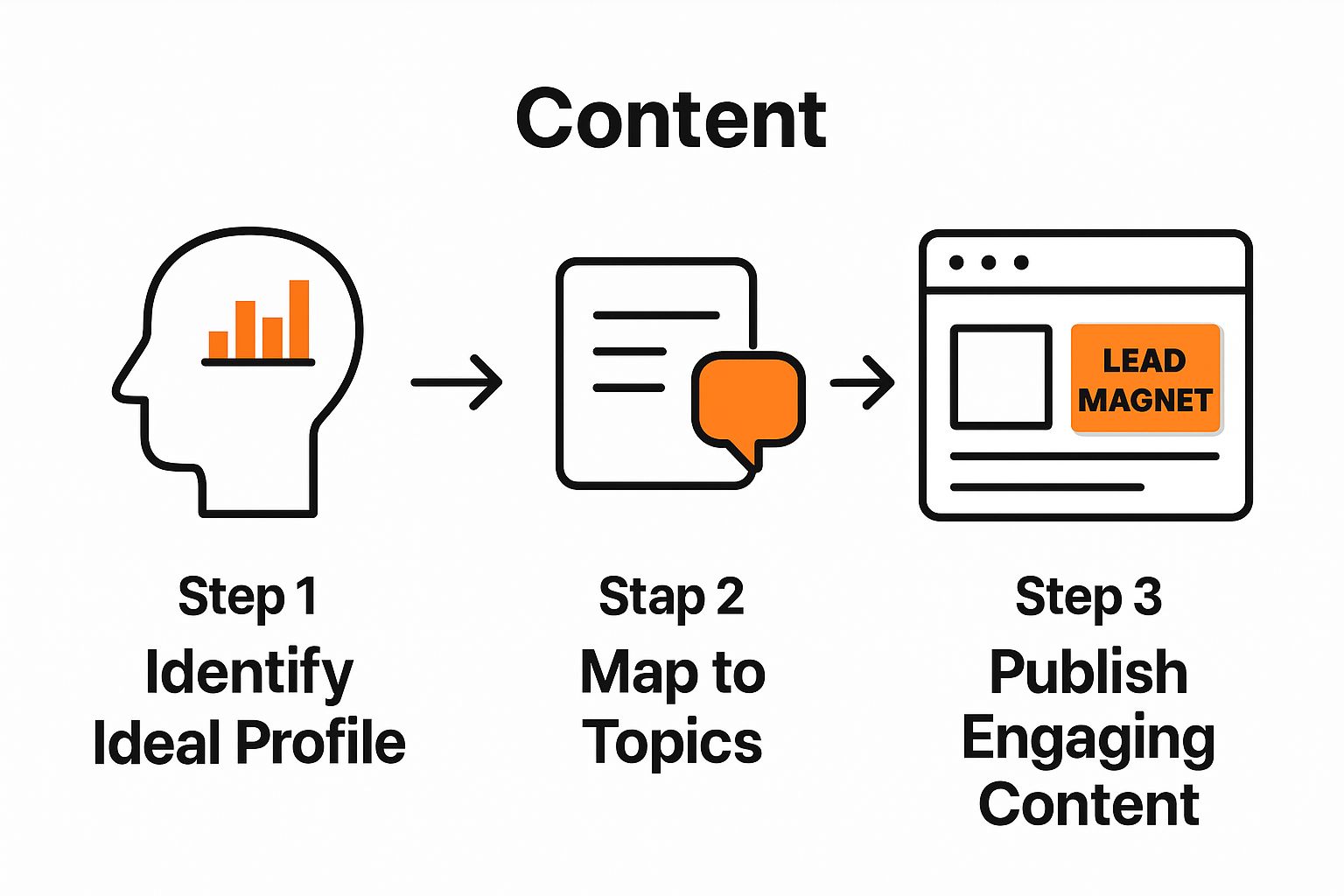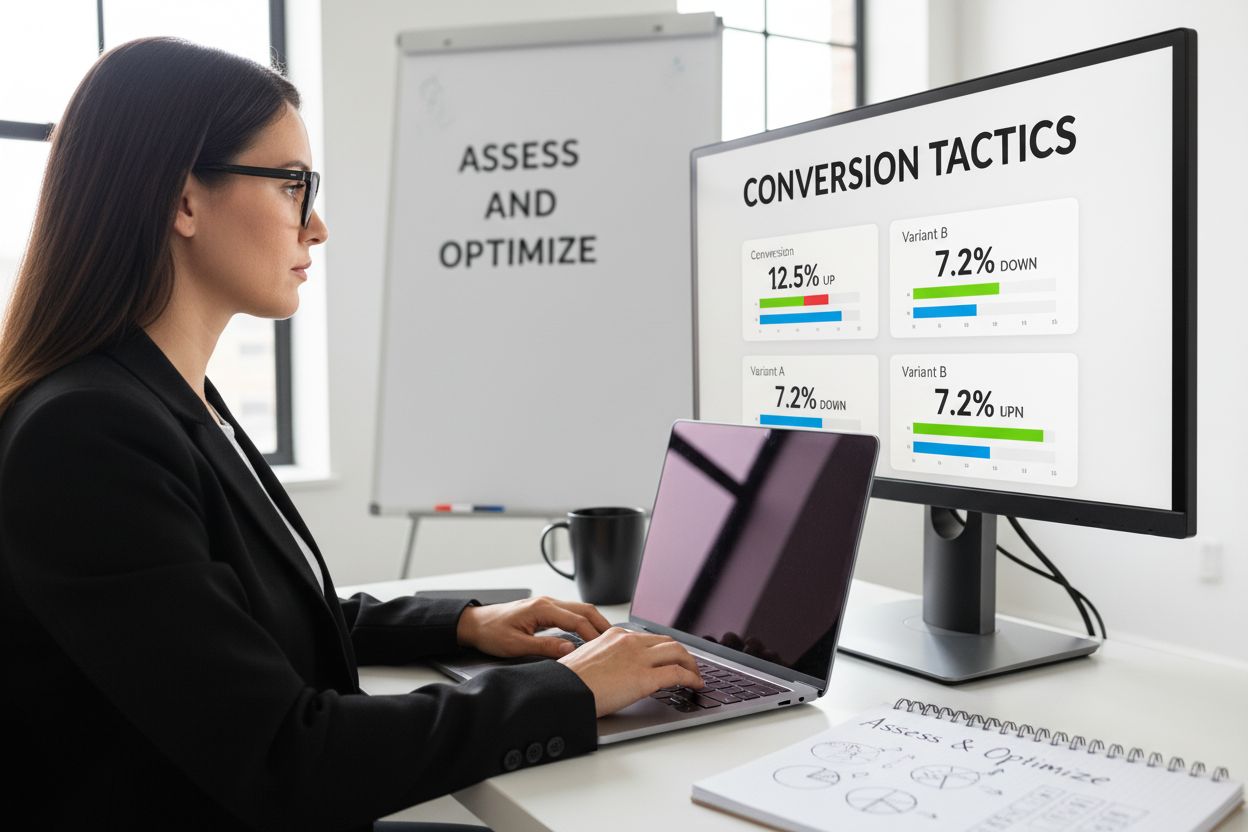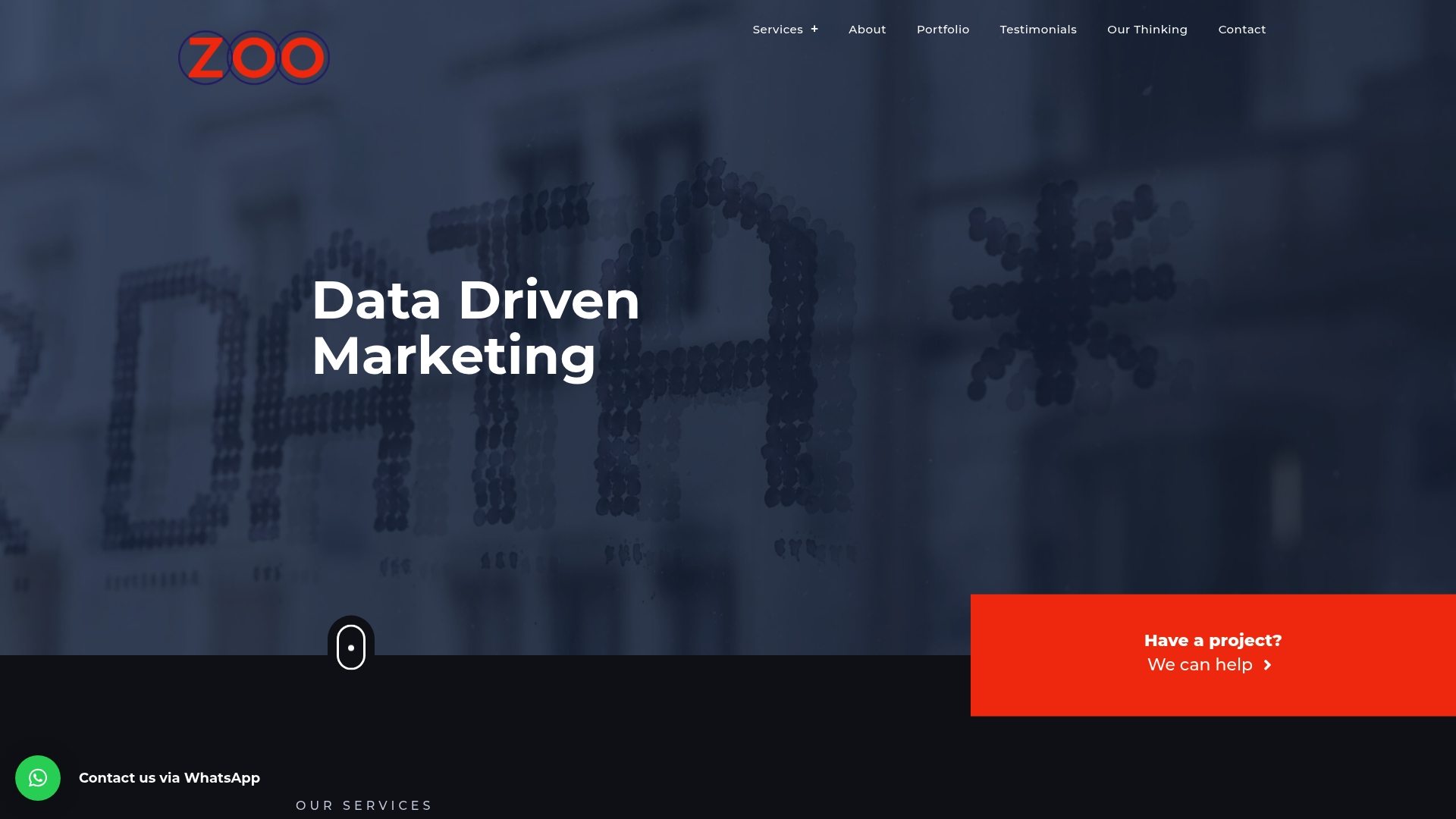Getting leads is one thing and turning them into paying customers is a whole different story. Most businesses lose up to 79 percent of potential leads because they lack a clear conversion plan. Sounds unbelievable right. And yet, the real surprise is that even the smartest marketing campaigns can flop if you do not truly understand what your ideal customer needs. The secret lies in a tight, focused approach that most companies miss completely.
Table of Contents
- Step 1: Define Your Ideal Customer Profile
- Step 2: Develop Engaging Content That Attracts Leads
- Step 3: Implement Effective Follow-Up Strategies
- Step 4: Nurture Leads With Personalized Communication
- Step 5: Assess And Optimize Your Conversion Tactics
Quick Summary
| Key Point | Explanation |
|---|---|
| 1. Define Your Ideal Customer Profile | Understand who benefits most from your offerings to tailor marketing strategies effectively. |
| 2. Create Engaging, Value-Driven Content | Develop content focused on customers’ pain points to attract and convert leads into loyal customers. |
| 3. Implement Timely, Personalized Follow-Up | Use strategic follow-ups to nurture leads, showing genuine interest and addressing specific needs. |
| 4. Nurture Leads with Personalization | Customize communications based on detailed customer profiles to foster meaningful relationships. |
| 5. Continuously Optimize Your Marketing Tactics | Regularly assess and refine marketing efforts based on performance metrics to improve conversion rates. |
Step 1: Define Your Ideal Customer Profile
Converting leads to customers begins with understanding exactly who will find the most value in your offering. Creating a precise ideal customer profile transforms your marketing approach from scattered attempts to targeted strategies that resonate deeply with potential buyers.
Start by gathering comprehensive demographic and psychographic information about your most successful current customers. This process involves analyzing characteristics like age, income level, professional background, personal interests, challenges, and purchasing behaviors. Data-driven customer profiling provides the foundation for effective lead conversion.
Compile information through multiple channels such as customer surveys, sales team insights, website analytics, and direct client interactions. Pay special attention to understanding their primary pain points and motivations. What problems does your product or service solve? How does it improve their professional or personal life?
Utilize tools like Google Analytics and customer relationship management platforms to collect and synthesize customer data. These platforms help you create a nuanced, multidimensional view of your ideal customer beyond basic demographic information.
Your customer profile should include both quantitative metrics and qualitative insights. Consider creating a detailed persona that represents your target customer. This persona should feel like a real person with specific goals, challenges, and preferences. By developing this comprehensive profile, you transform abstract data into a strategic tool for converting leads into loyal customers.
Verify your ideal customer profile by cross-referencing it with actual sales data and customer feedback. Look for patterns in purchasing behavior, communication preferences, and long-term customer value. A well-defined customer profile allows you to craft highly targeted marketing messages that speak directly to your audience’s needs and aspirations.
Below is a table summarising essential tools and resources mentioned for each step of the lead conversion process, with a brief explanation of their purpose.
| Step | Tool/Resource | Purpose |
|---|---|---|
| Define Customer Profile | Google Analytics, CRM platforms | Collect and analyse customer data for profiling |
| Create Engaging Content | Customer surveys, Industry publications | Identify customer pain points and content topics |
| Follow-Up Strategies | CRM automation tools | Schedule, track, and personalise communications |
| Personalised Communication | Advanced CRM, Data analytics | Segment leads and adapt messaging |
| Optimise Conversion | Analytics platforms, A/B testing tools | Track results, test, and refine marketing tactics |
Step 2: Develop Engaging Content That Attracts Leads
Transforming potential leads into customers requires creating content that speaks directly to their needs, challenges, and aspirations. Compelling content serves as a strategic magnet, drawing potential customers closer to your business by providing genuine value and addressing their specific pain points.
Begin by mapping your ideal customer profile directly to content topics that resonate with their professional and personal challenges. This means going beyond generic information and crafting nuanced, targeted content that demonstrates deep understanding of your audience’s specific context. Research industry publications, online forums, and customer feedback to identify the precise questions and concerns your target audience is experiencing.
Develop a content strategy that includes multiple formats to capture different audience preferences. Video tutorials, detailed blog posts, informative podcasts, and interactive webinars can each attract leads through different channels. **Diversifying your content approach ensures you reach potential customers through their preferred communication method.
 **
**
Focus on creating high-quality, actionable content that provides immediate practical value. Each piece should offer clear insights, step-by-step guidance, or innovative solutions that help your audience solve real problems. This approach positions your business as a trusted expert rather than simply another sales pitch. Learn more about crafting effective marketing strategies that transform content into a powerful lead generation tool.
Utilize storytelling techniques to make your content more engaging and memorable. Share real-world case studies, customer success stories, and personal experiences that illustrate how your solutions solve actual problems. This narrative approach helps potential leads visualize the tangible benefits of working with your business.
Verify the effectiveness of your content by tracking key metrics such as engagement rates, time spent on page, social shares, and lead conversions. Regularly analyze these indicators to refine your content strategy, ensuring that each piece of content becomes increasingly targeted and compelling. Remember that developing engaging content is an iterative process that requires continuous learning and adaptation.
Step 3: Implement Effective Follow-Up Strategies
Successful conversion of leads to customers hinges on strategic and timely follow-up approaches that demonstrate genuine interest and provide continued value. Effective follow-up transforms initial interest into meaningful engagement, creating a personalized communication pathway that guides potential customers toward a purchasing decision.
Design a systematic follow-up process that balances frequency and relevance. This means developing a communication strategy that provides valuable insights without overwhelming potential leads. Start by segmenting your leads based on their specific interests, engagement levels, and position in the buying journey. Customize your communication approach for each segment, ensuring that each interaction feels personalized and meaningful.
Explore our effective lead generation strategies to understand how targeted communication can significantly improve conversion rates. Utilize customer relationship management tools to track interactions, set automated follow-up reminders, and maintain consistent communication rhythms.
Timing and personalization are critical components of successful follow-up strategies. Implement a multi-channel approach that includes email, phone calls, social media interactions, and targeted content delivery. Each touchpoint should provide additional value, addressing specific questions or challenges identified during initial interactions. Consider creating a sequence of communications that gradually introduce more detailed information about your products or services.
Develop a series of strategic follow-up communications that progressively build trust and demonstrate your expertise. This might include sharing relevant case studies, offering free consultations, providing exclusive content, or presenting special introductory offers. The goal is to make each interaction feel like a helpful conversation rather than a sales pitch.
Technology plays a crucial role in effective follow-up. Leverage automation tools that allow for personalized, timely communications while maintaining a human touch. Set up intelligent email sequences, create targeted remarketing campaigns, and use customer data to trigger relevant communications based on specific user behaviors or interactions.
Verify the effectiveness of your follow-up strategies by tracking key metrics such as response rates, engagement levels, and conversion percentages. Regularly review and refine your approach, paying close attention to which communication methods and messages generate the most positive responses. Remember that follow-up is an ongoing process of learning and adaptation, requiring continuous refinement to meet the evolving needs of your potential customers.
Step 4: Nurture Leads with Personalized Communication
Personalized communication transforms generic interactions into meaningful relationships that dramatically increase the likelihood of converting leads to customers. The art of lead nurturing goes beyond simple marketing messages, creating a tailored experience that demonstrates genuine understanding of each potential customer’s unique needs and challenges.
Begin by leveraging the detailed customer profile developed earlier to craft communication strategies that speak directly to specific pain points and aspirations. This requires deep segmentation that considers not just basic demographics, but nuanced behavioral insights, previous interactions, and individual preferences. Use advanced customer relationship management tools to track and analyze interaction data, enabling more sophisticated and targeted communication approaches.
Understand why content marketing matters for creating meaningful connections with potential customers. Develop a multi-dimensional communication strategy that includes personalized email sequences, targeted content recommendations, and contextually relevant messaging across different platforms.
Implement intelligent communication workflows that adapt based on lead behaviors and responses. Create dynamic content paths that automatically adjust messaging based on how potential customers interact with your previous communications. This might involve sending different follow-up materials to leads who download specific resources or show interest in particular product features.
Utilize advanced personalization techniques that go beyond simply inserting a customer’s name into a standard template. Craft communications that demonstrate a deep understanding of their specific business challenges, industry trends, and potential solutions. This approach requires continuous learning and refinement, using machine learning and data analytics to improve communication precision over time.
Develop a comprehensive nurturing approach that provides consistent value through various touchpoints. This could include personalized webinars, exclusive industry insights, targeted case studies, and carefully curated resources that address specific stages of the customer journey. The goal is to position your business as a trusted advisor rather than a mere service provider.
Verify the effectiveness of your personalized communication strategy by tracking key performance indicators such as engagement rates, content interaction metrics, and conversion progression. Regularly analyze these metrics to understand which personalization approaches generate the most positive responses, and be prepared to continuously adapt your strategy based on real-world performance data.
Step 5: Assess and Optimize Your Conversion Tactics
Converting leads to customers requires continuous refinement and strategic analysis of your marketing performance. Optimization is not a one-time event, but an ongoing process of measuring, understanding, and systematically improving your conversion strategies.
Establish a comprehensive analytics framework that tracks key performance indicators across all stages of the customer journey. This involves implementing robust measurement tools that provide granular insights into how potential customers interact with your marketing efforts. Pay close attention to metrics such as engagement rates, conversion percentages, time spent on content, and the specific touchpoints that contribute most significantly to lead progression.
Learn how to leverage marketing analytics for your small business and transform data into actionable strategic insights. Invest in advanced tracking technologies that enable you to understand the complete customer experience, identifying both strengths and potential bottlenecks in your conversion process.
Develop a systematic approach to testing and iteration that allows for continuous improvement. Implement A/B testing methodologies across various marketing channels, experimenting with different communication strategies, content formats, and engagement approaches. This might involve testing variations in email subject lines, landing page designs, call-to-action placements, or personalization techniques.
Create a feedback loop that integrates insights from multiple sources. This includes analyzing quantitative data from analytics platforms, collecting qualitative feedback from sales teams, and directly surveying potential and existing customers. Understanding the narrative behind the numbers helps you develop more nuanced and effective conversion strategies.
Utilize advanced machine learning and artificial intelligence tools that can provide predictive insights and automated optimization recommendations. These technologies can help identify patterns and potential improvements that might not be immediately apparent through traditional analysis methods.
Verify the effectiveness of your optimization efforts by establishing clear benchmark metrics and tracking progress over time. Set specific, measurable goals for conversion rates, customer acquisition costs, and overall marketing efficiency. Regularly review these metrics, being prepared to pivot your strategies quickly based on emerging insights and changing market dynamics. Remember that successful conversion optimization is a dynamic, iterative process that requires continuous learning, adaptation, and strategic refinement.
This checklist table helps you verify each key area of the lead-to-customer conversion process, ensuring nothing crucial is overlooked as you implement strategies.
| Step | Verification Task | Check/Action |
|---|---|---|
| Customer Profile | Compare profile to sales data | Profile aligned with real buyer patterns |
| Content Creation | Track engagement metrics | Content driving meaningful interactions |
| Follow-Up | Review response and conversion rates | Timely and relevant communications |
| Personalisation | Analyse engagement by segment | Custom messages produce higher conversion |
| Optimisation | Monitor improvement in KPIs | Adjust strategy based on performance data |

Ready to Transform Your Lead Conversion in 2025?
You have learned the value of data-driven customer profiling and the need for engaging, tailored follow-up strategies from the article. But piecing data together and keeping up with constantly changing lead behaviours can be overwhelming. Many business owners struggle with tracking setups that fail, generic content that never converts, and scattered manual follow-up that leaves valuable leads cold. Imagine the relief when every touchpoint with your lead is mapped, tracked and personalised, leading to higher conversions and less wasted effort.

Zoo Digital takes your insights from “Mastering Converting Leads to Customers in 2025” and turns them into actionable marketing strategies. Move from confusion to clarity with expert tracking implementation and configuration. Experience results with perfectly targeted Google Ads, Meta Ads and TikTok Ads, plus CRM automation that makes nurturing leads effortless. Are you ready to make every lead count this year? Visit Zoo Digital now and let us help you drive real growth and measurable results for your business.
Frequently Asked Questions
How can I define my ideal customer profile for effective lead conversion in 2025?
To define your ideal customer profile, gather demographic and psychographic information from your current top customers. Analyze factors like their age, income, challenges, and interests, and compile this data to create a detailed persona that reflects your target audience.
What types of content should I create to attract potential leads?
Focus on producing engaging, high-quality content that addresses the specific pain points of your target audience. Consider using various formats such as blogs, videos, or webinars to cater to different audience preferences and increase your reach.
How can I personalize my follow-up strategies to improve lead conversion?
To personalize your follow-up strategies, segment your leads based on their interests and behaviors, tailoring your communication for each segment. Implement a systematic follow-up process that offers valuable insights and addresses specific challenges identified during initial interactions.
What metrics should I track to assess my lead conversion strategies?
Key metrics to track include engagement rates, conversion percentages, and time spent on content. By regularly reviewing these indicators, you can optimize your strategies and identify areas for improvement, aiming for a measurable performance boost of at least 15%.
How often should I optimize my lead conversion tactics?
Lead conversion tactics should be optimized continually, rather than just once. Implement a routine of testing and refining your strategies, reviewing performance metrics monthly, to ensure your approach remains effective and relevant.
What role does customer feedback play in converting leads to customers?
Customer feedback is vital as it provides qualitative insights that complement quantitative data. Regularly collecting and analyzing feedback helps you understand your audience’s needs better, allowing for more tailored marketing strategies that resonate with potential customers.

